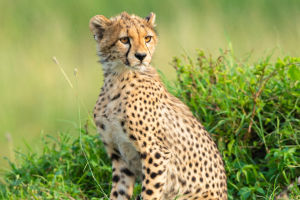The kingfisher is a vibrant, distinctive bird that belongs to the family Alcedinidae, renowned for its striking colors and agile hunting techniques.
With more than 90 species scattered across the globe, kingfishers are found in various habitats, including woodlands, wetlands, riverbanks, and even tropical forests.
They are particularly abundant in regions of Asia, Africa, and Australia, but species can also be found in Europe and the Americas. These birds have captivated the attention of nature lovers, bird watchers, and researchers alike, not only for their beauty but also for their intriguing behaviors.
Physical Characteristics
Kingfishers are relatively small birds, with lengths typically ranging from 10 to 45 centimeters. Their vivid plumage, often featuring electric blues, greens, and oranges, makes them easily recognizable. Their beak is long and pointed, an adaptation perfectly suited to their hunting style. Male and female kingfishers usually have similar coloring, but in some species, subtle differences in plumage can help distinguish the sexes.
The bird’s compact body is accompanied by short legs and a large head, which gives it a unique, stocky appearance. Its powerful wings enable rapid, agile flight, allowing it to dart swiftly through trees or hover above water as it searches for prey.
The Fascinating World of Kingfishers (All 119 Species Compared)
Video by Textbook Travel
Hunting and Diet
Kingfishers are primarily carnivorous and are well known for their skillful hunting, especially in aquatic environments. Their primary diet consists of fish, insects, small amphibians, and crustaceans. Perched on a branch or hovering above a body of water, the kingfisher uses its keen eyesight to spot prey. Once a target is in sight, the bird plunges into the water with astonishing speed, grabbing its prey with its sharp beak.
One of the most impressive aspects of the kingfisher’s hunting ability is its precise timing. They can adjust for the refraction of light on the water's surface, ensuring they strike at the correct angle to catch their prey. After catching a fish, the kingfisher typically returns to its perch to consume it, often beating the fish against a hard surface to soften it before swallowing.
Habitat and Nesting
Kingfishers are highly adaptable birds, capable of living in a variety of environments. Some species thrive along rivers and lakes, while others inhabit coastal areas, forests, or even deserts. Their nests, however, are almost always found near water. Most kingfishers dig burrows in riverbanks, where they lay their eggs. These tunnels can be up to a meter long, providing a safe, hidden environment for their young.
Both the male and female share responsibilities when it comes to raising their offspring. They take turns incubating the eggs, and once the chicks hatch, both parents are actively involved in feeding and caring for them until they are ready to fledge.
Cultural Significance
Throughout history, the kingfisher has been a symbol of peace, prosperity, and good fortune in many cultures. In ancient Greece, the bird was associated with calm seas and was believed to bring peace to the waters, giving rise to the term "halcyon days." In some indigenous cultures, the kingfisher is seen as a messenger of good luck and is often featured in folklore and mythology.
In more recent times, the kingfisher has become a symbol of environmental conservation. Its reliance on clean, unpolluted waters for feeding makes it an indicator species for the health of aquatic ecosystems. The presence of kingfishers in an area often signals a well-balanced, healthy environment.
Conservation and Threats
While many kingfisher species are widespread and not currently endangered, several are facing habitat loss due to deforestation, pollution, and climate change. As wetlands and natural river habitats are destroyed, kingfishers may find it increasingly difficult to thrive. Conservation efforts aimed at protecting natural waterways and reducing pollution are crucial for ensuring the survival of these birds in the wild.
Lykkers, the kingfisher is not just a visual delight but also an ecological treasure. Its vivid colors and agile movements make it a symbol of nature's beauty, while its importance as an indicator of environmental health underscores its relevance in conservation efforts. As the world continues to evolve, preserving the kingfisher and its natural habitats remains an essential part of safeguarding biodiversity.







